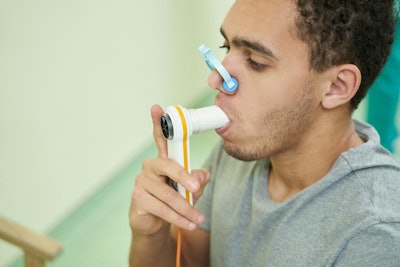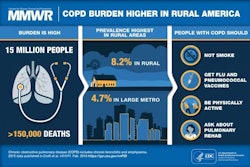
Equations that don’t use racially and ethnically adjusted spirometry results to help determine eligibility for COPD clinical trials may lead to higher percentages of Black patients enrolled, according to research published at the ATS 2024 International Conference.
“While other researchers have initiated investigations into the effects of adhering to the recent American Thoracic Society (ATS) guidance on utilizing Global Lung Function Initiative (GLI) race-neutral spirometry reference equations in clinical practice, our research has identified a gap in the literature regarding the impact of these equations on inclusion criteria in clinical trials,” said lead author Frank Sciurba, MD, professor of medicine, University of Pittsburgh School of Medicine, and medical director, Pulmonary Physiology Lab, UPMC.
In 2023, an expert panel convened by the ATS issued a statement recommending that race and ethnicity no longer be considered factors in interpreting the results of spirometry. For many years, race-specific equations or adjustments have been used to interpret pulmonary function test (spirometry) results. This approach requires results for Black patients to be lower — sometimes, up to 15% lower than for white patients.
“In our study, we saw a discernible pattern in which race-neutral equations tend to decrease the severity level for self-identified white subjects, while concurrently increasing severity for self-identified Black subjects,” said corresponding author Chad Karoleski, BA, research IT specialist, University of Pittsburgh Emphysema COPD Research Center. “This resulted in a GOLD stage shift which led to more Black subjects and fewer white subjects meeting typical spirometric inclusion criteria for COPD clinical trials.”
Global Initiative for Chronic Obstructive Lung Disease (GOLD) classifications are used to determine COPD clinical trial eligibility, with those testing at the GOLD 2 (moderate) and GOLD 3 (severe) levels typically deemed eligible.
To test the potential effects of the new guidelines, the team looked at participants from the Combined Pittsburgh Lung Cohort, who had spirometry performed. The predicted values were calculated for both GLI ethnic-adjusted and GLI Global race-neutral equations to identify the FEV1% and resulting GOLD stage for each individual with each reference approach. They conducted an analysis of the shift in GOLD category overall and by self-reported race.
The researchers identified 3,716 (3,474 self-identified white and 242 self-identified Black) individuals with a baseline spirometry evaluation demonstrating an FEV1/FVC ratio of less than 0.7% for inclusion in the study. When using the race-neutral reference equations instead of the race-adjusted equations, 5.8% of individuals became ineligible, while 2.1% were considered eligible, with all cases of decreasing GOLD stage occurring in white individuals and all cases of increasing GOLD stage occurring in Black individuals. Overall, 1.6% of white patients and 8.3% of Black patients gained eligibility, while 6% of white patients and 2.9% of Black patients were no longer eligible.
“We anticipate that our findings will stimulate further discussion and investigation into the development of appropriate inclusion criteria, guided by the ATS recommendation of using race-neutral spirometry reference equations,” Karoleski said. “Future research will be needed to determine the implication of these shifts on appropriate clinical trial selection, while the role of the race-independent classification STAR staging in clinical trial selection, based exclusively on FEV1/FVC ratio, also warrants evaluation.”
























